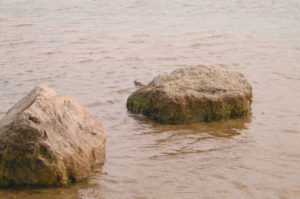Begun in 1987 on an area of worked-out gravel pits, Lackford Lakes Nature Reserve is the joint project of Suffolk Wildlife Trust and the late Bess and Bernard Tickner. Barely five miles from Bury St Edmunds, the reserve is everything the term implies: peaceful, silent except for the rustling of leaves, lapping water, birdsong and the careful footsteps of visitors.
The Tickners lived at Fuller’s Mill and from their gardens (open on summer Wednesday afternoons) they had a view across the gravel workings, which seemed a potentially rich area for wildlife. Bernard bought one of the redundant areas and, in association with the Wildlife Trust, began its development into what is now a major Site of Special Scientific Interest (SSSI). Shortly before his recent death, Bernard was present at the thirtieth anniversary of the reserve, marked by his final contribution to its extension.
Lackford is now a haven for migrating wildfowl, dragonflies and butterflies. The woods provide cover for a variety of songbirds and sometimes deer can be encountered along the paths. Each of the former gravel pits is now a lake, in one case shared with a sailing club. Each lake has a viewing bench or bird hide. Two hides are named after Bess and Bernard and the visitor centre combines birdwatching and nature trail facilities with refreshments and WCs.
My recent visit was meant to occupy a spare hour but became so interesting I spent two and missed a planned lunch break. Along every path there was an invitation from one or other singing bird, though only once did I see one for long enough to prepare yet fail to take its photograph. Similarly, a hobby scouted one of the lakes but was gone before the camera was ready. Nonetheless a few shots produced images of numerous birds, plus a dragonfly-like insect not often seen here in less than Continental summer heat. Among the butterflies was a speckled wood, obligingly settled on a nettle.
The lakes draw adults of all ages but are popular with children too. There was a school party enjoying a nature trail, and during the summer holidays there will be a variety of tracking, drawing and modelling opportunities. It is even possible to book a birthday party there, with a knowledgeable guide on hand.
Lackford is easily reached by car along A1101. There is a bus route but that requires a walk of a few hundred metres. It is open from dawn until dusk. There are options for guided walks at different times. On previous visits at different times of year I have seen a turtle dove, heard a nightingale and, after several fruitless quests, spotted a flock of waxwings in a tree beside the road. One highlight was to see a kingfisher perched on a lakeside shrub before diving into the water and emerging with a fish. No kingfisher this time but for compensation a common tern returning to a raft with its own fish and trying to warn off a pair of geese.










